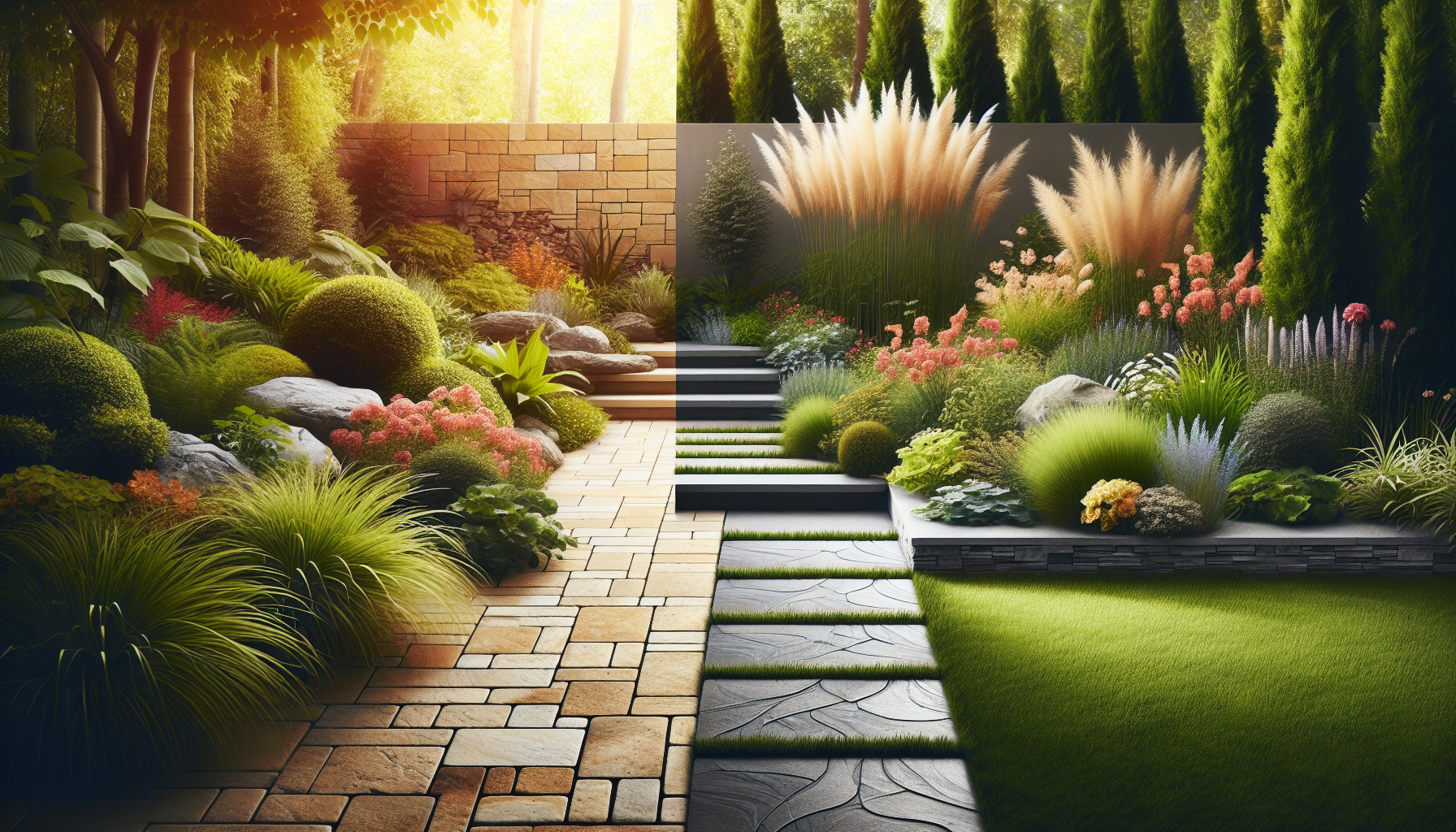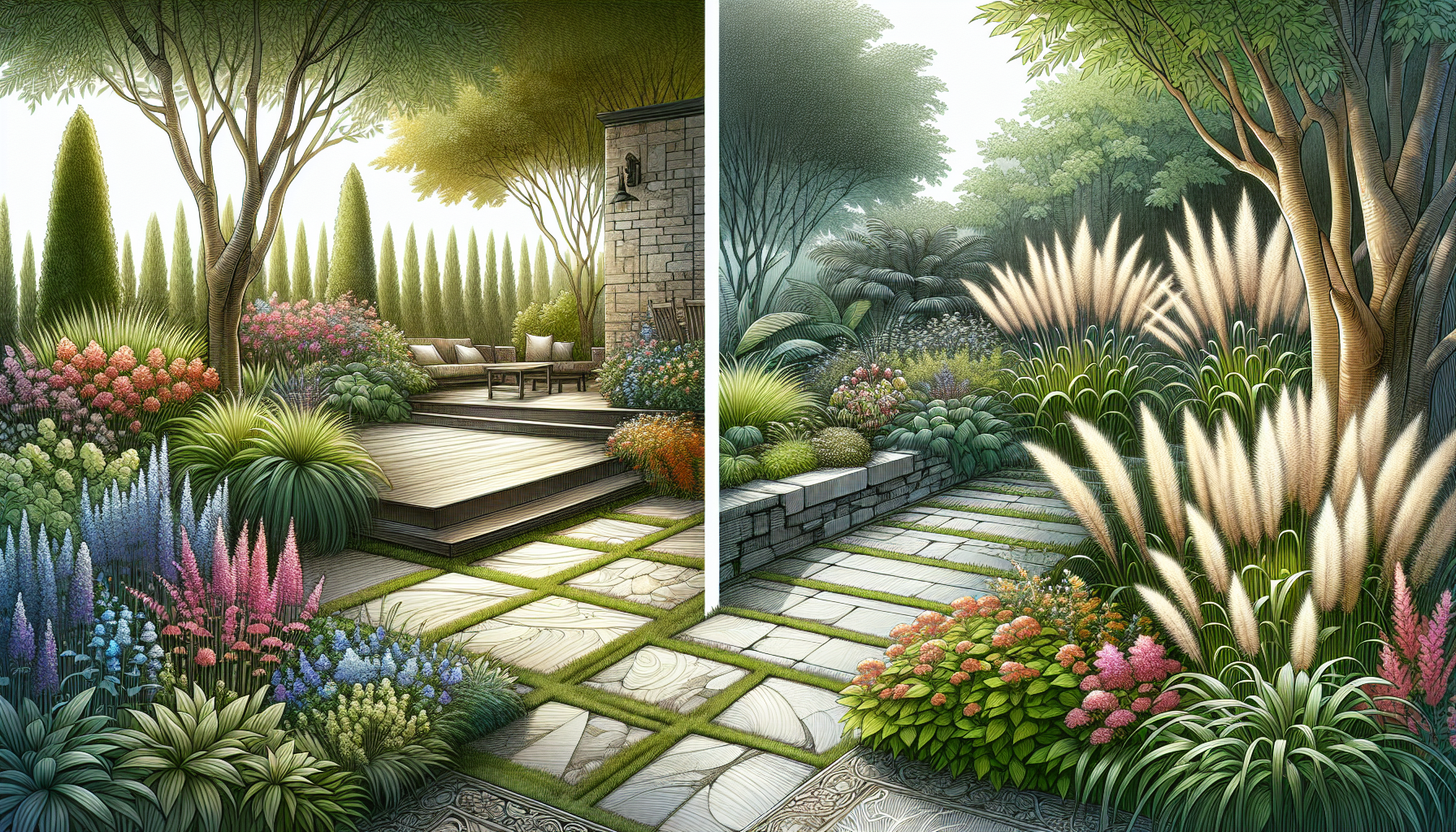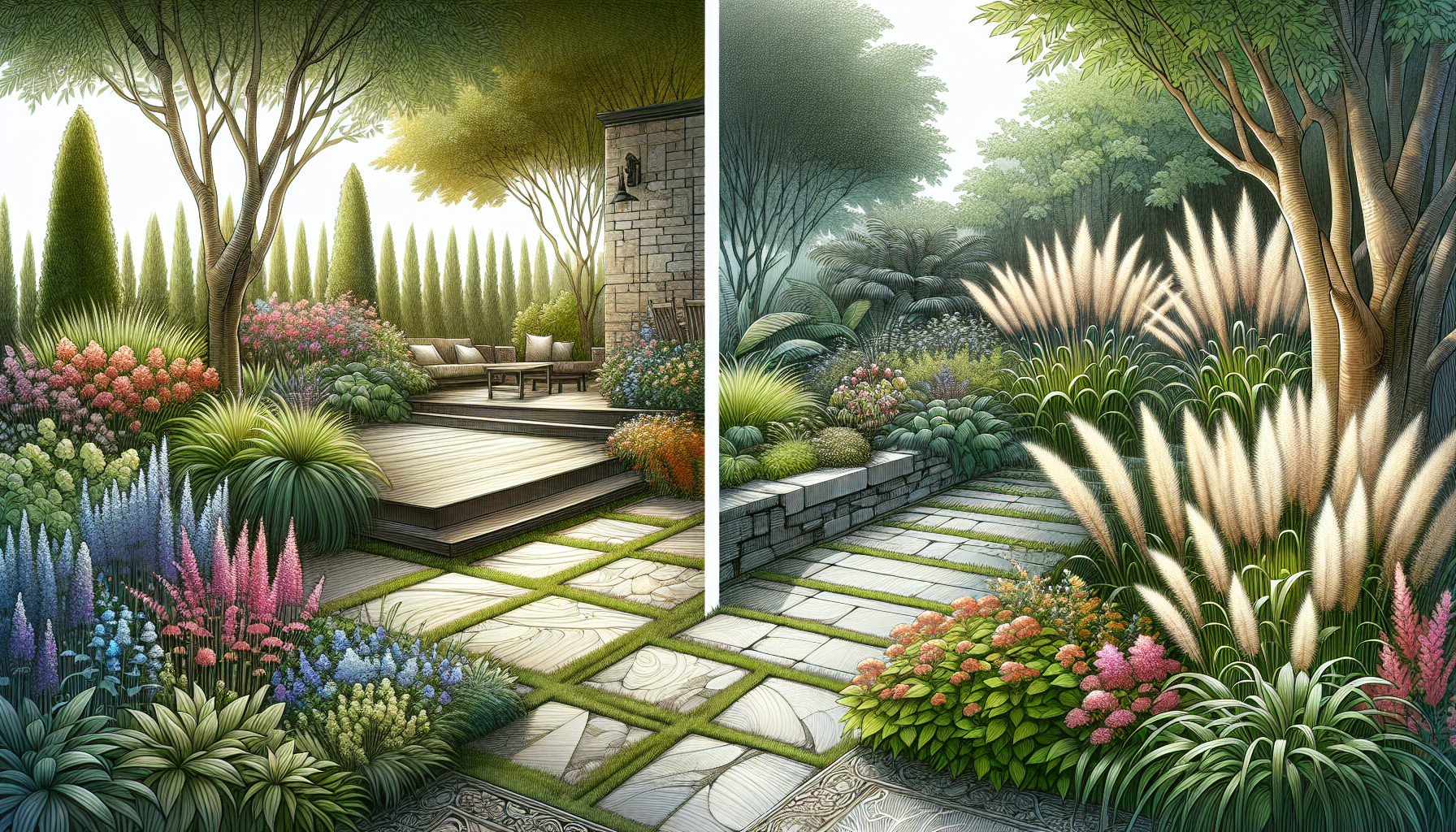What do you think about landscaping your outdoor space? Have you ever wondered whether to start with hardscaping or softscaping first? This decision can set the stage for a beautiful and functional garden. Let’s break down the key aspects you need to consider to make an informed choice.

Understanding Hardscaping and Softscaping
Before you can decide the order of operations, it’s essential to understand what hardscaping and softscaping entail.
What Is Hardscaping?
Hardscaping refers to the non-plant elements of your landscape. This includes materials like stone, concrete, wood, and metal. These materials help define your outdoor space and can include features such as:
- Patios
- Walkways
- Retaining walls
- Decking
- Fences
Hardscaping creates structure and form in your garden. It helps guide foot traffic, adds aesthetic appeal, and often provides functionality. If you want to establish a durable framework for your property, hardscaping is critical.
What Is Softscaping?
Softscaping, on the other hand, pertains to the living elements of your landscape. This includes all the plant materials like:
- Trees
- Shrubs
- Flowers
- Grass
- Vegetation
Softscaping adds life, color, and texture to your outdoor space. It plays a major role in the overall aesthetics and can help improve the ambiance of your garden area.
Why Choose Hardscaping First?
Some opt to start with hardscaping before introducing softscaping. Here are some reasons why that might be the best choice for your project.
Provides a Solid Foundation
Starting with hardscaping sets a solid foundation for your landscape. If you have plans for pathways, patios, or walls, you want to ensure all heavy work is done before planting. They will not only lift the overall look but also provide stability for any softscape elements you plan to add later.
Prevents Damage to Plants
If you install plants first, heavy machinery or tools used for hardscaping can damage your new plants. Preparing the hardscaping first ensures that your plants won’t be disturbed or harmed. Plus, once your hardscape is in place, it becomes easier to visualize where to place your plants.
Achieves an Instant Impact
Hardscaping often provides an immediate visual impact. A well-constructed patio or walkway can elevate the overall aesthetic of your yard significantly. This can give you a tangible sense of progress as you continue with the landscaping project.
Enhances Functionality
Functional elements like retaining walls can serve multiple purposes, such as preventing soil erosion and creating distinct garden zones. Having these elements in place first allows you to plan softscaping accordingly around these features.
Why Choose Softscaping First?
On the flip side, there are arguments in favor of starting with softscaping. Here’s why some homeowners might decide to plant before they pave.
Easier to Visualize Plant Growth
Starting with plants allows you to see how they will fill the space as they grow. This perspective can guide your decisions on the location and setup of hardscaping features.
Increases Soil Health
Planting first can improve soil health, making it easier for plants to grow. Properly installed hardscaping can sometimes disrupt the natural soil layer, impacting drainage and root health.
Flexibility in Design
If you plan to integrate softscape elements dynamically, starting with plants gives you more flexibility in choosing their layout. You may decide to move features around as you see how they complement your growing plants.
Creates a Green Environment
Softscaping can create a more inviting space during the hardscaping process. When you plant first, you bring life to your garden area immediately, providing an engaging environment as you work.
Weighing the Pros and Cons
To sum it all up, let’s take a closer look at the benefits and drawbacks of each approach.
| Approach | Pros | Cons |
|---|---|---|
| Hardscaping First | Provides structure, prevents damage to plants, instant visual impact, enhances functionality. | Limited flexibility, you might overlook the overall garden aesthetics initially. |
| Softscaping First | Easier visualization, better soil health, more design flexibility, creates an inviting green space. | Potential damage to plants during hardscaping, less structural support initially. |
Choosing between hardscaping and softscaping is not a one-size-fits-all decision. You should think about your specific goals for the garden, your timeline, and your personal preferences.

Making the Decision
How do you choose? Here are some questions to ask yourself to guide your decision.
What Is Your Primary Goal?
If your goal is to create a defined, structured area quickly, hardscaping may be the way to go. However, if you aim to create a vibrant garden, you might want to start with softscaping.
What Is the Scope of Your Project?
The scale of your project will play a critical role in decision-making. For larger projects, hardscaping first might be beneficial, while smaller projects could benefit from starting with softscaping.
Are There Site-Specific Issues?
Consider factors like drainage and soil quality. If there are concerns over water runoff, hardscaping elements like retaining walls may need to be addressed before planting.
What’s Your Budget?
Budget considerations can also influence your choice. Plans that require more resources for hardscaping may dictate that you start there to avoid disrupting newly planted materials later.
Combining Hardscaping and Softscaping
In some cases, it makes sense to integrate both aspects simultaneously. Here’s how to do that effectively.
Phased Approach
Consider a phased approach where you work on hardscaping and softscaping in stages. This can help spread out costs and labor while allowing you to adjust the design based on growing plants.
Focus on Zones
Create distinct zones in your landscape where you can simultaneously implement hardscaping and softscaping. For example, you might install a patio while also planting surrounding flower beds.
Design Elements
When you think about hardscape designs, consider the needs of the softscape as well. For instance, select hardscape materials that complement your plants’ colors and textures.
Professional Guidance
Hiring a professional can help achieve a balance. Experts can guide you on the best order of operations based on your specific garden needs and vision.
The Role of Xclusive Home Services
When it comes to getting the right work done for your landscaping project, having a reliable service provider is essential. Xclusive Home Services offers a comprehensive range of services that can meet your needs from start to finish.
Why Choose Xclusive Home Services?
Founded in 2025, Xclusive Home Services is located at 14505 N. Hayden Rd., Ste. 101, Scottsdale, AZ 85260. They specialize in hardscaping, pool installations, deep carpet cleaning, tile and grout restoration, upholstery cleaning, and outdoor pressure washing among other services.
How They Help You
If you want a professional touch on your hardscaping or softscaping project, they are ready to assist you. From the initial planning to the final touches, Xclusive Home Services can ensure that the job is done right. With their expertise and experience, you can feel confident about your landscaping project.
Contact Information
If you’re considering hardscaping or softscaping your property, give Xclusive Home Services a call at (602) 341-5545 or send an email to management@xclusivehomeservicesco.com.
Conclusion
Whether you choose hardscaping or softscaping first is a decision that depends largely on your specific goals, project scope, and personal preferences. Each approach comes with its own pros and cons, and sometimes a phased integration of both may be the best option. Remember that planning is key, and utilizing a professional service like Xclusive Home Services can help turn your landscaping vision into reality. Whatever path you take, may your outdoor space become a place of beauty and enjoyment for years to come!



